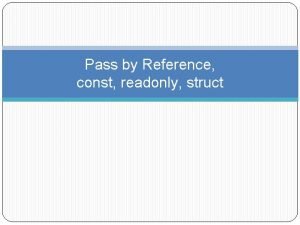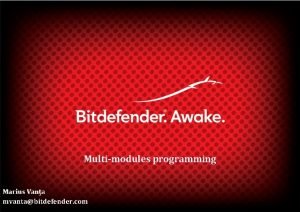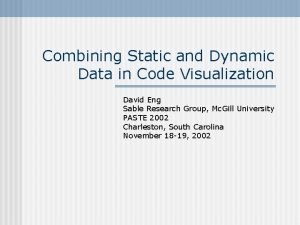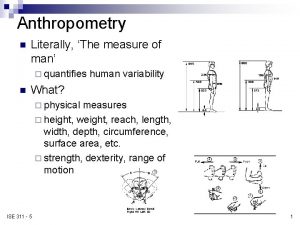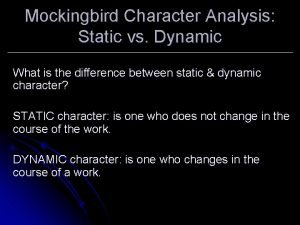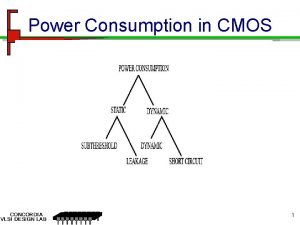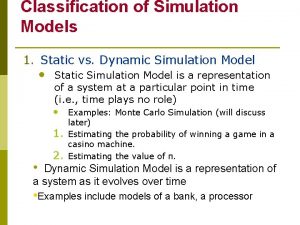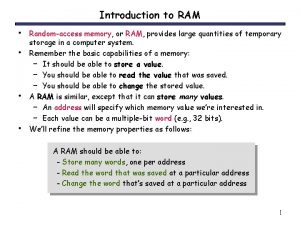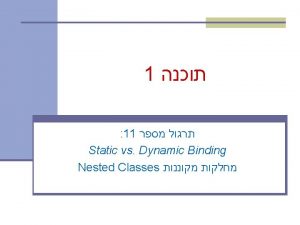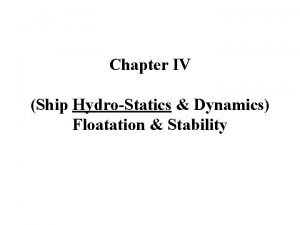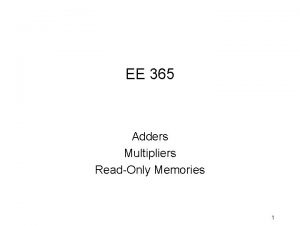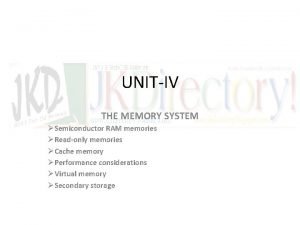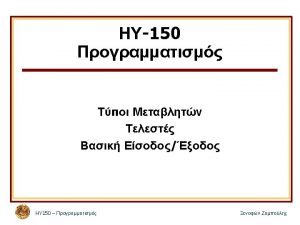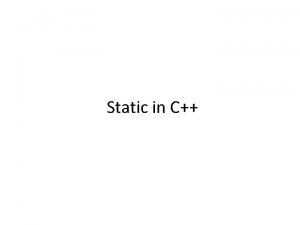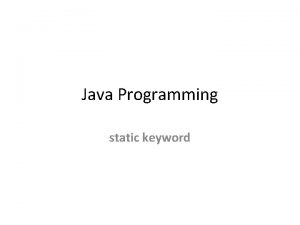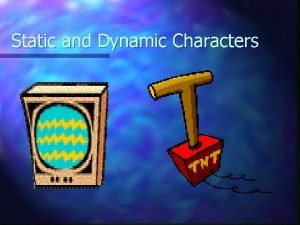EE 365 Readonly memories Static readwrite memories Dynamic































- Slides: 31

EE 365 Read-only memories Static read/write memories Dynamic read/write memories 1

Read-Only Memories • Program storage – Boot ROM for personal computers – Complete application storage for embedded systems. 2

A 4 x 4 Multiplier (using AND gates and full-adders) Maximum Delay path 3

A 4 x 4 multiplier using a 256 x 8 ROM Use a C-program to generate this table 4

diagram of a 8 x 4 diode And. Logic you have a 4 x 4 multiplier that will be. ROM real fast For a 4 x 4 multiplier replace the 3 -to-8 decoder by a 8 -to-256 decoder Sounds scary? We will see much larger circuits later Add 8 vertical lines to output And then add a number of diodes at some of the intersection points using the table generated earlier 5

Two-dimensional decoding 128 x 1 ROM 6

Mos Transistors as Storage elements 7

Larger example, 32 Kx 8 ROM 8

Typical commercial EEPROMs 9

Microprocessor EPROM application 10

ROM control and I/O signals 11

ROM timing 12

Read/Write Memories • a. k. a. “RAM” (Random Access Memory) • Volatility – Most RAMs lose their memory when power is removed – NVRAM = RAM + battery – Or use EEPROM • SRAM (Static RAM) – Memory behaves like latches or flip-flops • DRAM (Dynamic Memory) – Memory lasts only for a few milliseconds – Must “refresh” locations by reading or writing 13

SRAM 14

SRAM operation • Individual bits are D latches, not edge-triggered D flip-flops. – Fewer transistors per cell. • Implications for write operations: – Address must be stable before writing cell. – Data must be stable before ending a write. 15

SRAM array 16

SRAM control lines • Chip select • Output enable • Write enable 17

SRAM read timing • Similar to ROM read timing 18

SRAM write timing • Address must be stable before and after write-enable is asserted. • Data is latched on trailing edge of (WE & CS). 19

Bidirectional data in and out pins • Use the same data pins for reads and writes – Especially common on wide devices – Makes sense when used with microprocessor buses (also bidirectional) 20

SRAM devices • Similar to ROM packages 28 -pin DIPs 32 -pin DIPs 21

Synchronous SRAMs • Use latch-type SRAM cells internally • Put registers in front of address and control (and maybe data) for easier interfacing with synchronous systems at high speeds • E. g. , Pentium cache RAMs 22

DRAM (Dynamic RAMs) • SRAMs typically use six transistors per bit of storage. • DRAMs use only one transistor per bit: • 1/0 = capacitor charged/discharged 23

DRAM read operations – Precharge bit line to VDD/2. – Take the word line HIGH. – Detect whether current flows into or out of the cell. – Note: cell contents are destroyed by the read! – Must write the bit value back after reading. 24

DRAM write operations – Take the word line HIGH. – Set the bit line LOW or HIGH to store 0 or 1. – Take the word line LOW. – Note: The stored charge for a 1 will eventually leak off. 25

DRAM charge leakage • Typical devices require each cell to be refreshed once every 4 to 64 m. S. • During “suspended” operation, notebook computers use power mainly for DRAM refresh. 26

DRAM-chip internal organization 64 K x 1 DRAM 27

RAS/CAS operation • Row Address Strobe, Column Address Strobe – n address bits are provided in two steps using n/2 pins, referenced to the falling edges of RAS_L and CAS_L – Traditional method of DRAM operation for 20 years. – Now being supplanted by synchronous, clocked interfaces in SDRAM (synchronous DRAM). 28

DRAM read timing 29

DRAM refresh timing 30

DRAM write timing 31
 Readwrite web
Readwrite web Cisco privilege levels read only
Cisco privilege levels read only Readonly struct
Readonly struct Static vs dynamic linking in os
Static vs dynamic linking in os Static vs dynamic data
Static vs dynamic data Static and dynamic anthropometry
Static and dynamic anthropometry East and west egg in the great gatsby
East and west egg in the great gatsby Cs 3250
Cs 3250 Malware dynamic analysis
Malware dynamic analysis The veldt characters
The veldt characters Static routing and dynamic routing
Static routing and dynamic routing Difference between static and dynamic characters
Difference between static and dynamic characters Mttf
Mttf Dynamic.character
Dynamic.character The crucible characters act 1
The crucible characters act 1 Dynamic and static
Dynamic and static Static class loading and dynamic class loading
Static class loading and dynamic class loading Stagnation pressure formula
Stagnation pressure formula Classification of models in simulation
Classification of models in simulation Define dynamic assessment
Define dynamic assessment Is paris a static or dynamic character
Is paris a static or dynamic character Static and dynamic ram
Static and dynamic ram Static binding example
Static binding example Who is the dynamic character in the monkey's paw
Who is the dynamic character in the monkey's paw Static vs dynamic linking
Static vs dynamic linking Queue is a static data structure
Queue is a static data structure Is ponyboy a static or dynamic character
Is ponyboy a static or dynamic character Difference between class diagram and use case diagram
Difference between class diagram and use case diagram Static stability vs dynamic stability
Static stability vs dynamic stability Symbols in things fall apart
Symbols in things fall apart What is linking and loading
What is linking and loading Type checking in compiler design
Type checking in compiler design


